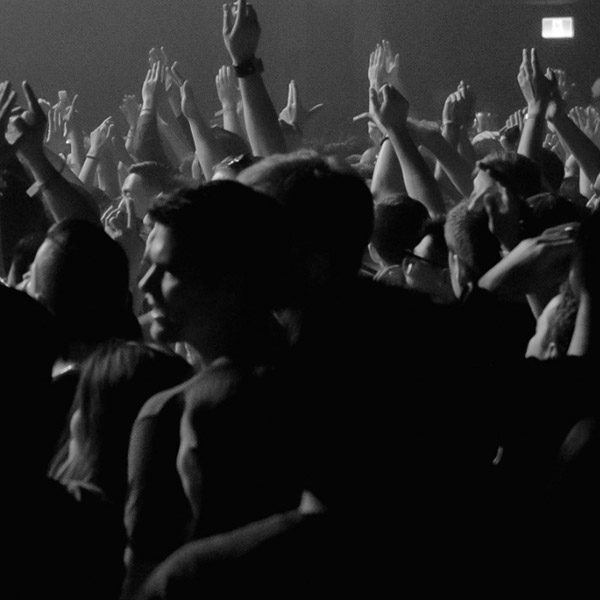How Runaway June Came to Introduce a Subtle, ‘New Kind’ of Sound With Its Latest Single
It’s the Wilson Phillips song the world didn’t know it needed.
Tight, three-part harmonies, infectious hooks and a light, positive air that makes it easier to hold on for one more day — that’s Runaway June’s “New Kind of Emotion,” a slow-boiling track soaked in fresh nostalgia.
Wilson Phillips was “my favorite when I was little,” Runaway June founder Jennifer Wayne says, “because my mom used to listen to them.”
Wayne is the only original member left in Runaway June. Current lead vocalist Stevie Woodward and fiddler-vocalist Natalie Stovall found their roles in the trio’s live show through several tours, but it wasn’t until they developed “New Kind of Emotion” with songwriter Paul Sikes (“Wildflowers and Wild Horses,” “Make Me Want To”) on July 19, 2023, that they felt like they’d found their collective voice in the writing room.
A Woodward family gathering started the creative chain. Some of the guests started making music, and one of her cousin’s friends slid into a chord progression with a descending element. Woodward freestyled a melody, and she liked it so much that she recorded it on her phone for later use.
“The song and the melody felt like it was a very summery, nostalgic song,” Woodward remembers. “My thought was, ‘Well, what if it was a song about driving down the Pacific Coast Highway?’ I saw a convertible with the roof off, and I thought of the song ‘Wild Horses’ by The Rolling Stones, one of my favorite bands.”
But no co-writers responded to that descending progression until she pitched it to her bandmates. “It wasn’t meant for those people,” she says. “It was meant to be a Runaway June song.”
But it continued to evolve. The PCH and the “Wild Horses” reference disappeared as they evaluated its foundation. “One of us was like, ‘Well, gosh, it kind of just feels like a love song,’ ” Wayne recalls. “And one person said, ‘Yeah, like a new kind of emotion.’ And then I think I said, ‘You set it in motion,’ and then we just rolled with it.”
They wrote the chorus first, catching a sunshiny vibe with a subtle spike of melancholy. That came from the chord structure, which features two major-seventh chords back-to-back. They use four notes each, rather than the standard three, to create their sound, and one is only a half-step from the root. It introduces a tinge of dissonance, adding biting complexity.
“Those major-seventh chords give you that kind of throwback feel, but also in an uptempo way that makes you just kind of want to roll the windows down at the same time,” Sikes says.
Runaway June explored harmonies as the members shaped the melody, pointedly emphasizing the trio’s signature. “The three-part is the lead voice,” Stovall says. “That’s what this band is. It’s three-part harmony, and obviously Stevie sings the lead lines. But we want to make sure that the harmonies are really supporting everything.”
The major-sevenths, by stuffing four notes into the chords, offered greater harmonic options, and Sikes was determined to take advantage of them, encouraging Wayne to incorporate the dissonant notes into her high harmonies. Initially, she found herself edging those notes up a half-step to the more conventional root, but as Sikes coached her through it, Wayne increasingly caught the beauty in the part.
“It rubs a little bit,” she says. “My brain couldn’t wrap around singing it, but once you learn it and you sing it together, you’re like, ‘Wow, that’s actually really cool.’ ”
Once they’d crafted two verses at a lower, sultry pitch, they developed another, unexpected hook. “This is what a love song feels like” popped up, and they instinctively repeated the phrase hypnotically after the second chorus.
“When you think about relationships, a lot of times they come out of nowhere,” Woodward says. “So that part, while it does come out of nowhere, it’s fitting for the message.”
“It’s not your typical bridge,” Sikes adds, “because we’re not bringing up any new information. We’re not reinventing the wheel. You might consider it a refrain, more than anything, where it’s kind of a ‘row, row, row your boat’ round-robin [of] that hook.”
They created another moment with a four-note passage in the intro that became a key instrumental riff. It operated similarly to the major-seventh chords, holding at a final note that didn’t quite resolve. It introduced more rewarding tension, similar to the fresh uncertainty of a new relationship.
“I’m always trying to find some sort of fiddle riff that is another hook in addition to the lyrical hooks,” Stovall says.
Sikes built the bulk of a demo that day, converting that riff to a programmed steel guitar in some parts of the performance. He also programmed drums, which were eventually replaced, though the members of Runaway June discovered to their surprise that they preferred the mesmeric artificial percussion, which mirrored the narcotic pleasure of new love.
They developed a game plan for the song during preproduction with their producer, Sugarland’s Kristian Bush, before recording it at Nashville’s Sound Stage in March 2024. The studio band easily grasped the goals.
“The song is a little bit about that weird floatiness you get when you meet somebody for the first time and you connect with them and you’re like, ‘Wow, why do I feel lighter?’ ” Bush explains. “Until you have that feeling, you don’t really connect to a lot of those kinds of songs.”
Woodward played one of the acoustic guitars on the track, drummer Travis McNabb captured the controlled nature of the programmed percussion and Stovall turned in her fiddle riff — though it was blended with Benji Shanks’ electric guitar and a shape-shifted Brandon Bush keyboard part.
“We use an ambient pedal a lot called the Microcosm,” Kristian Bush says. “It inserts weird, uncontrollable versions of your note, so the keyboard might be a Wurlitzer or a [Fender] Rhodes or something really normal. Once you run this thing, you kind of spin knobs until it does something wacky and pray that it goes to the good side.”
A day later, he booked Runaway June into the Starstruck Studios and had the members record their vocals simultaneously for the first time. Watching through the glass in their separate vocal booths, they could breathe as one and follow each other as they would in concert. It’s part of the reason their harmonies sound as tight as a Wilson Phillips performance.
“That’s exactly what I was going for,” Kristian says.
The track went to digital service providers in October, and programmers responded enthusiastically as Runaway June toured. That played a part when the trio asked Quartz Hill to release “New Kind of Emotion” to radio instead of a previously planned ballad. It shipped to country stations through PlayMPE on March 24.
It also tested well informally with people outside the music business; it’s the first time that all of Runaway June’s family members were in harmony on a particular song.
“It’s a good sign,” Stovall says, “when your parents tell you that they were dancing to it in the living room.”
Jessica Nicholson
Billboard






